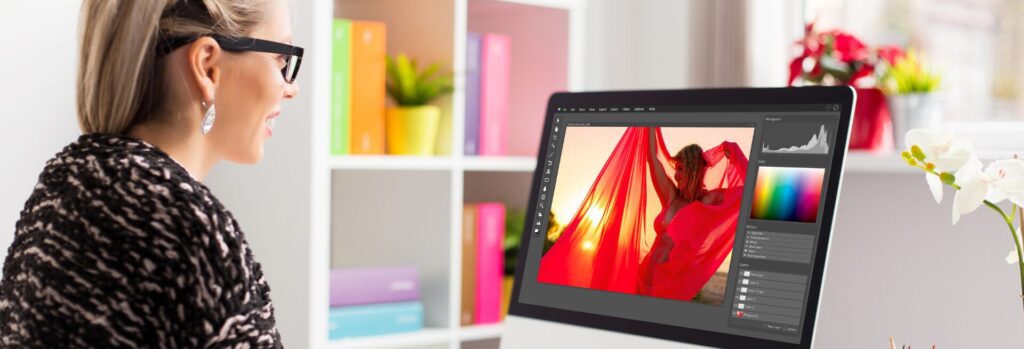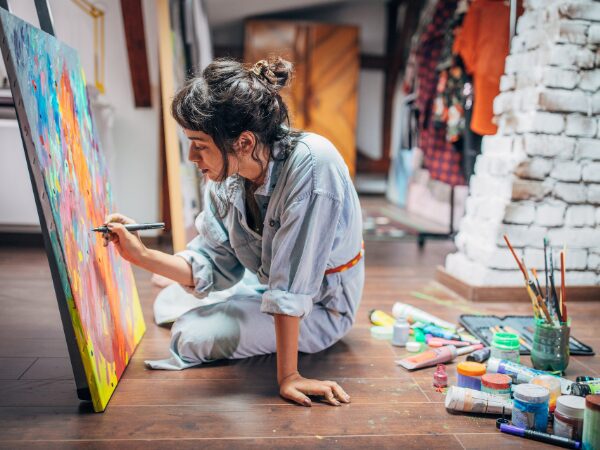New Clean Hydrogen Tax Credit on the Horizon
A new tax credit, the clean hydrogen tax credit, may be on the horizon for businesses that invest...

For years, art and creative disciplines have been ruled by human intelligence. However with significant contributions of artificial intelligence (AI) to the domains of science and industry, its application to creative industries has become equally intriguing. This article aims to examine AI-generated prints, exploring the novel methodologies employed, the significance of human-AI collaboration, and the potential impacts of AI on the art market.
Artistic AI recognition pertains to the remarkable capacity of AI to generate, transform, and assess artistic works utilizing innovative techniques. One of the predominant methodologies employed in contemporary times is the utilization of generative models, specifically generative adversarial networks (GANs) and variational autoencoders (VAEs). These models have the capability to produce art, music, literature, and other forms of creative expression that exhibit realism, creativity, and innovation.
Researchers and developers have developed effective training techniques to investigate the essence of creativity, which was previously believed to be solely inherent in human traits. However, there are concerns regarding the ethical and legal consequences associated with these advancements. Debates pertaining to authorship, creativity, copyright, and related matters pose significant challenges to the scope and progression of these models. Yet, it has also assisted the community through creation, innovation, and resolving serious and long-term issues. An illustrative instance is the decades-long debate about the origins of the painting, known as the de Brécy Tondo, which can be one and for all assigned to its true author.
The issue of determining the genuine authorship of a masterpiece will be effectively resolved through the development of AI models that are designed with high efficiency and accuracy, devoid of any external biases, and only reliant on historical artworks and data. Furthermore, it is vital to acknowledge that artificial intelligence has also provided customized support since AI-powered tools are routinely employed to aid artists and creators. These tools possess the capability to assist artists in generating ideas, automating monotonous tasks, and customizing their work according to the tastes of their audience.
This concept entails the production of artistic works only through the utilization of autonomous systems that rely on algorithms and computer programs. This artistic practice is alternatively referred to as code art. There exist two primary categories: the random approach and the ordered approach. The initial strategy entails the integration of randomness and chance into a code, whereas the subsequent type can be derived through the utilization of a straightforward mathematical equation. Combining the aforementioned approaches will result in a third strategy that has elements of both order and chaos. Two instances of generative art that can be used as examples are “Flowers” by Kate Compton and “Cellular Automata and the Edge of Chaos”.
Generative art techniques enable artists to explore new forms of creativity and often result in artworks that are both unique and dynamic. In this context, many techniques are used to produce variant forms of code art. One such method is algorithmic drawing, wherein the artist utilizes algorithms to direct and shape the process of drawing. For example, an algorithm might define specifications, lines, and shapes, as well as colors and positions, resulting in complex and visually appealing compositions. Another methodology involves the utilization of genetic algorithms, which evaluate the process of natural selection to evolve and generate artistic creation. Neural style transfer is an additional technique that employs deep neural networks to transfer the artistic style of one image onto the content of another. The process of combining the content and data of two pictures may lead to visually engaging and aesthetically pleasing outcomes.
Only a few of the approaches adopted by AI have been emphasized; there are still many not included here, along with some that have not yet been invented or discovered. This demonstrates the extensive and progressive nature of this tool within the domain of art.

This concept is quite similar to the methodology employed by an expert to identify the authenticity and provenance of art. However, as AI is introduced, trained, and incorporated into this process, there is an assurance of enhanced efficiency, accuracy, and precision. The training process involves providing an enormous volume of data containing artwork, visual content, literature, etc. The algorithm subsequently proceeds by searching for typical structure features, potential common attributes, and other relevant factors. Subsequently, through the collection and analysis of this information, it possesses the ability to conduct comparisons. This approach allows us to establish correlations between painters and their artwork, musicians and their songs, or authors and their literary works. The detection can be made by image recognition, as algorithms can analyze high-resolution images of artworks to detect irregularities, such as variations in brushwork, colors, or textures, which may indicate a forgery. Style recognition can compare an artwork’s style with that of the artist’s known works, potentially identifying inconsistencies. Finally, training the model to recognize and validate the authenticity of an artist’s signature can ensure signature verification. This topic is still an emerging field, displaying considerable potential in its ability to enhance and streamline state-of-the-art authentication and provenance processes.
While AI offers significant potential in art authentication and provenance, it is imperative to acknowledge that AI systems should be regarded as instruments that operate in conjunction with human experts. Art authentication often requires nuanced judgment that considers historical context, artistic intent, and other factors that AI may not fully capture. Therefore, AI should be used to assist experts rather than replace them, ensuring a more comprehensive and accurate evaluation of artwork. Additionally, ethical considerations related to data privacy and the responsible use of AI in the art world must be addressed.
The emergence of AI-generated prints has significantly expanded the horizons of creative expression, prompted a revaluation of traditional artistic concepts, and revolutionized the manner in which art is valued and acquired. This article elucidates the revolutionary capacity of artificial intelligence within the field of art while simultaneously examining the ethical and market implications associated with this emerging mode of artistic expression.
Sources:
AI says a painting was made by the master Raphael. Art experts disagree. – The Washington Post
An introduction to Generative Art: what it is, and how you make it (freecodecamp.org)
Explore our latest insights
More arrow_forward
A new tax credit, the clean hydrogen tax credit, may be on the horizon for businesses that invest...

The Clean label has transitioned from trend to a lifestyle placing pressure on the food and bever...

The Industry 4.0 represents a blend of two industries: information technology and manufacturing. ...

Provincial governments are slowly unveiling their provincial budgets outlining fiscal strategies ...